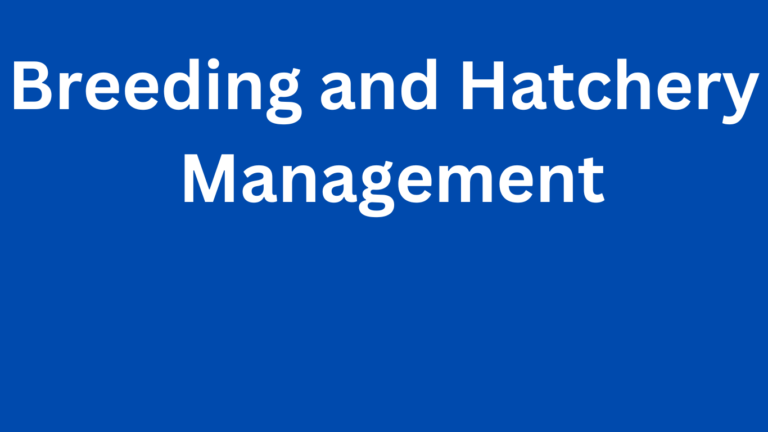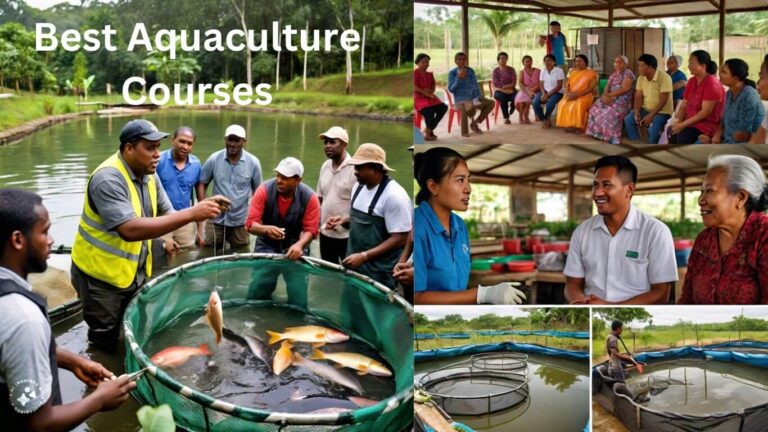Breeding and Hatchery Management involves the adoption of specialized techniques and infrastructure to increase productivity and sustainability.
This chapter delves into critical aspects of breeding and hatchery management, offering insights into breeding techniques, hatchery setup and management, and the intricacies of larval rearing and nursery practices.
Mastering these elements can significantly enhance the efficiency and profitability of your fish farm, facilitating a seamless transition from small-scale operations to commercial success.
1. Breeding Techniques
1 Selecting Breeding Stock
Choosing the right breeding stock is fundamental to a successful breeding program. Focus on selecting fish that exhibit desirable traits such as rapid growth, disease resistance, and high fertility rates. Ensure that your broodstock are mature, healthy, and genetically diverse to minimize the risk of inbreeding, which can lead to weakened stock and reduced productivity.
2 Natural Spawning
Natural spawning is a straightforward method that involves creating a conducive environment for fish to reproduce on their own. This approach relies on environmental cues such as temperature, light, and water quality to stimulate spawning.
Proper management of these factors can enhance the spawning success of various species. For instance, maintaining optimal water temperature and mimicking natural light cycles can significantly boost the reproductive activity of your fish.
3 Induced Breeding
In scenarios where natural spawning is insufficient or unreliable, induced breeding is a viable alternative. This technique involves the administration of hormones to stimulate ovulation and spawning in fish. Commonly used hormones include synthetic versions of fish gonadotropin-releasing hormones or pituitary extracts.
Induced breeding allows for greater control over the timing and frequency of spawning, which can be crucial for meeting production targets in commercial operations.
2. Hatchery Setup and Management
1 Hatchery Design
A well-designed hatchery is pivotal to the success of your breeding program. Key considerations include the layout of the facility, water supply and filtration systems, and the types of tanks or ponds used for spawning, hatching, and rearing.
The hatchery should be designed to accommodate the specific needs of the species you are breeding, with facilities that promote optimal water flow, aeration, and temperature control.

2 Water Quality Management
Maintaining high water quality in the hatchery is essential for the health and survival of eggs and larvae. Key parameters to monitor include temperature, pH level, dissolved oxygen, and ammonia levels.
Regular testing and adjustments are necessary to ensure that these parameters remain within the optimal range for the species being reared. Implementing a robust filtration and aeration system can help maintain water quality and prevent the buildup of harmful substances.
3 Feeding and Nutrition
Proper nutrition is crucial during the early stages of fish development. Newly hatched larvae require a diet rich in protein and essential nutrients to support rapid growth and development. Live feeds such as rotifers and brine shrimp are commonly used in the initial stages, gradually transitioning to formulated feeds as the larvae grow. Careful monitoring of feeding practices and adjusting the diet as needed can significantly improve survival and growth rates.
3. Larval Rearing and Nursery Practices
1 Larval Rearing Techniques
Effective larval rearing involves providing the right environmental conditions and nutrition to maximize survival and growth rates. Larval tanks should be maintained at optimal temperatures and oxygen levels, with gentle water circulation to simulate natural conditions.
Regular observation and monitoring of larval health and behavior are essential to detect any issues early and make necessary adjustments.
2 Nursery Management
The nursery phase bridges the gap between larval rearing and grow-out stages. During this period, juvenile fish are gradually introduced to larger tanks or ponds, where they continue to grow and develop.
Nursery management involves maintaining appropriate stocking densities, water quality, and feeding schedules to ensure the health and growth of the juveniles. This phase is critical in preparing the fish for eventual transfer to grow-out facilities or market.
3 Health Monitoring and Disease Prevention
Proactive health monitoring and disease prevention are vital components of larval rearing and nursery management. Regular health checks, including visual inspections and laboratory testing, can help identify and address potential issues before they become severe. Implementing biosecurity measures, such as quarantine protocols and disinfection procedures, can further reduce the risk of disease outbreaks and improve overall hatchery productivity.
Conclusion
By integrating these advanced techniques and scaling up your operations, you can achieve higher yields and improved efficiency in your fish farming business. Through careful planning, meticulous management, and a commitment to continuous improvement, you can transform your hatchery into a thriving enterprise, contributing to the sustainability and profitability of the aquaculture industry.





